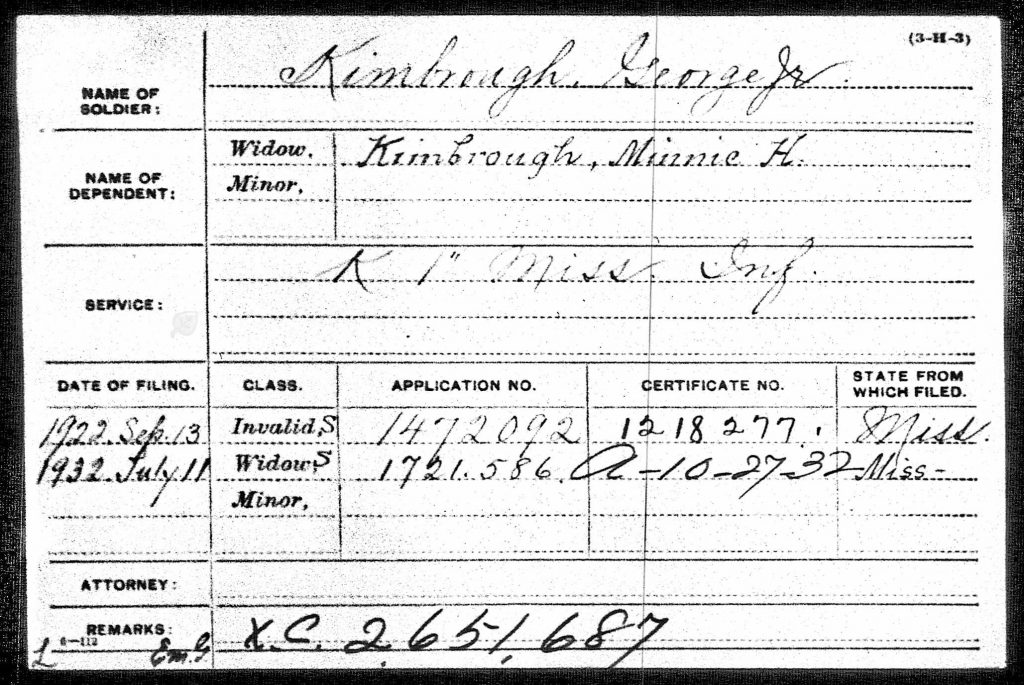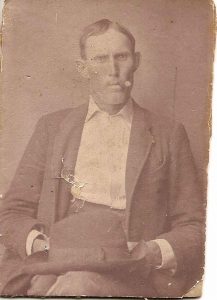My daughter is a rock hound. She loves to find the precious in the rough. She sees the beauty from a jagged rock with a little glimmer shining through. She’s always on the hunt and her closets are full of the precious rocks that hold a glittering gem here or there. She has loved rocks since she was a little girl, putting them in her pockets on camp outs and hikes. We were visiting grandparents in California and she heard about the precious gems located in the San Gabriel Mountains of San Bernardino County, California. She went hiking and hunting for rubies in the Cascade Canyon, Angles National Forest. After a hard hike, a little excavation and some determination with a geological rock pick she found tons of tiny little ruby crystals hiding through a jagged, creamy white rock. It wasn’t easy, it took hard work hunting and looking in the right areas.
When rubies are treated to extreme heat and pressure, they are formed under the earth’s surface. Many minerals form beautiful crystals, but the most prized of all are gemstones. Uncut gems often look fairly ordinary–like rocks. It’s only when they are cut and polished that they obtain the brilliance and luster that gives them their value.
As we search out our relatives to know more about them we sometimes happen upon relevant facts that gives us clues into their life and how they’ve lived. If we follow those clues and go beyond we open a whole new world of learning and information. Family history has been a journey of discovery and belonging to distance lands, times and family from long ago.
I’ve learned so much about the California Gold Rush from William Jackson Ross and Jacob W Helm. I’ve researched women’s Dower Rights as widows from Mildred (Pattillou) Kimbrough, Jane Love (Aiken) Jackson, and Elizabeth (Pamplin) Jackson.
I took a family trip back East and visited Gettysburg. While we were there, a Gettysburg National Park Guide looked up John Wesley Kimbrough. He showed us the exact place on the field John Wesley fought during Picketts Charge. A monument there states 53 men walked away from 393 combatants. John Wesley Kimbrough was among the 53 that were spared on that fateful day in July of 1853.

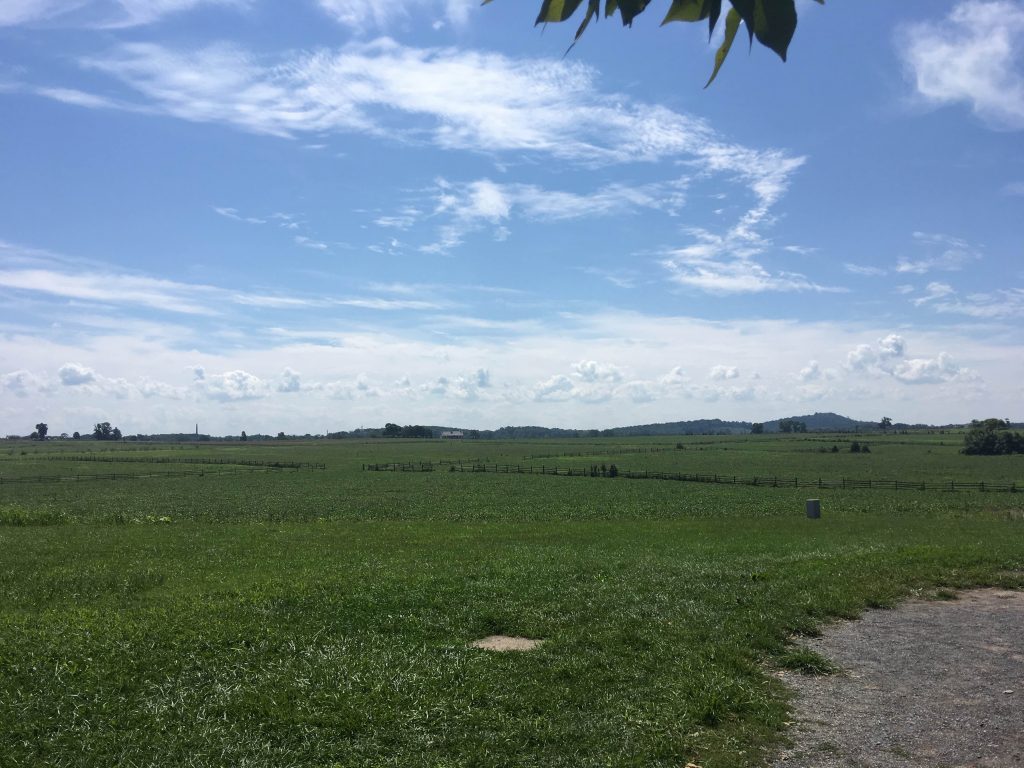
He fought just a few feet away from the Union line. How he survived is a miracle. In Gettysburg they have a memorial to the 11th Mississippi Infantry Regiments that fought that fateful day and on the plaque it describes the list of survivors from Picketts Charge. There was a particular feeling of awe as we stood on the site that our great great … grandfather fought as well as so many others in one of the bloodies battles of the Civil War. I knew from past research and obtaining records from the National Archive that John had fought at Gettysburg. How or where I didn’t know. I took my kids there to feel the spirit of the place and left with so much more then I had dared expected. I had found a hidden family history gem. I had found information about the battle at Gettysburg and his exact location on the field.
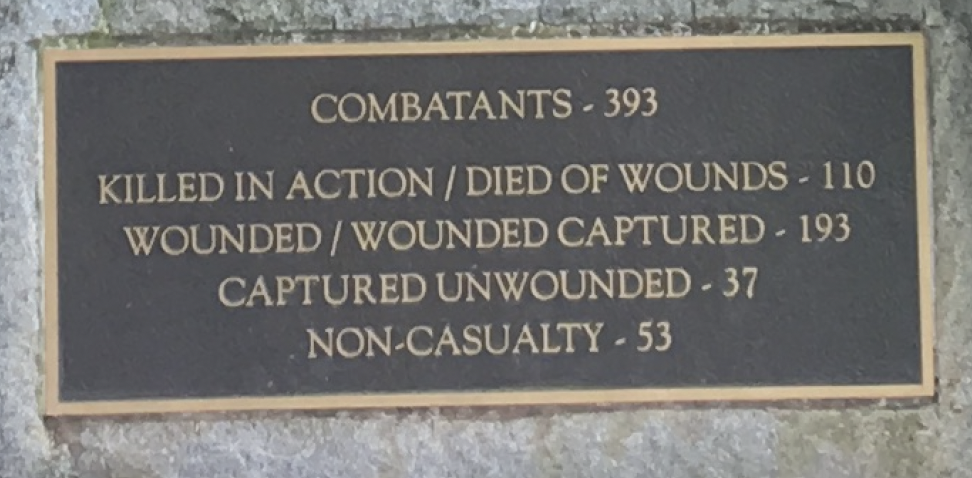
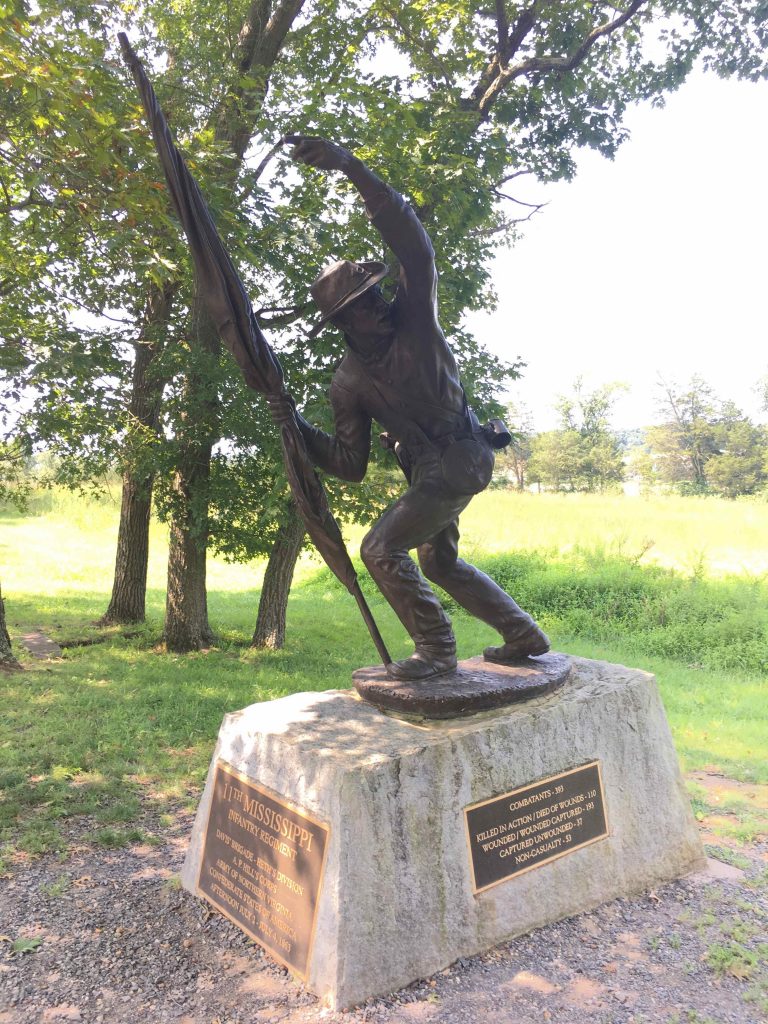
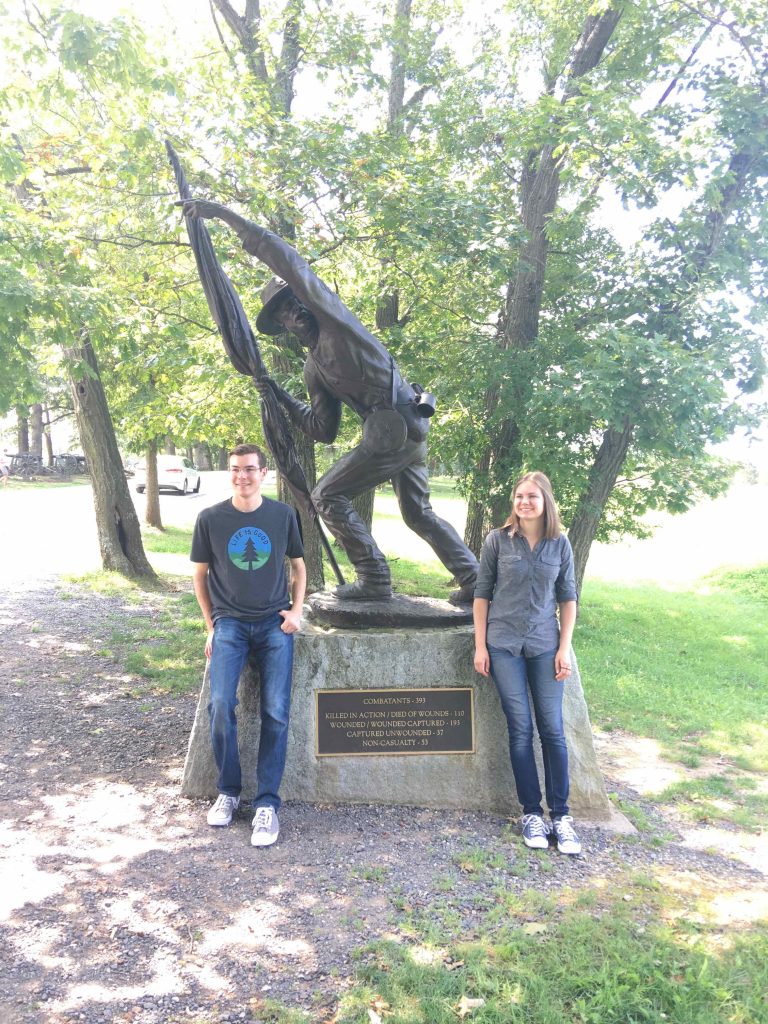
I’ve learned about Rev. Henry Pattillou and his part in North Carolina’s Third Continental Congress during the Revolutionary War.
I’ve also discovered the fate of the Gaston Family as they fought for life, liberty and the pursuit of happiness standing up against the British Soldiers and their commands. Justice John Gaston has his house ransacked and a bounty put on his head.
I have learned much more about so many different family members it’s been an exhilarating experience to discover a different time and people that lived and died giving us the chance to be here today.
It hasn’t been easy. It’s taken determination and perseverance to continually search for the family history gems amongst the rubble of information.
I had an exciting discovery when I was searching to learn more about George Henry Kimbrough. I found a clue on Ancestry that stated Minnie Howard Kimbrough applied for a war pension for George. Grandma Lundeen never told us anything about her Grandfather, George fighting in any war. I thought with the dates of his birth that it could possibly be World War I.
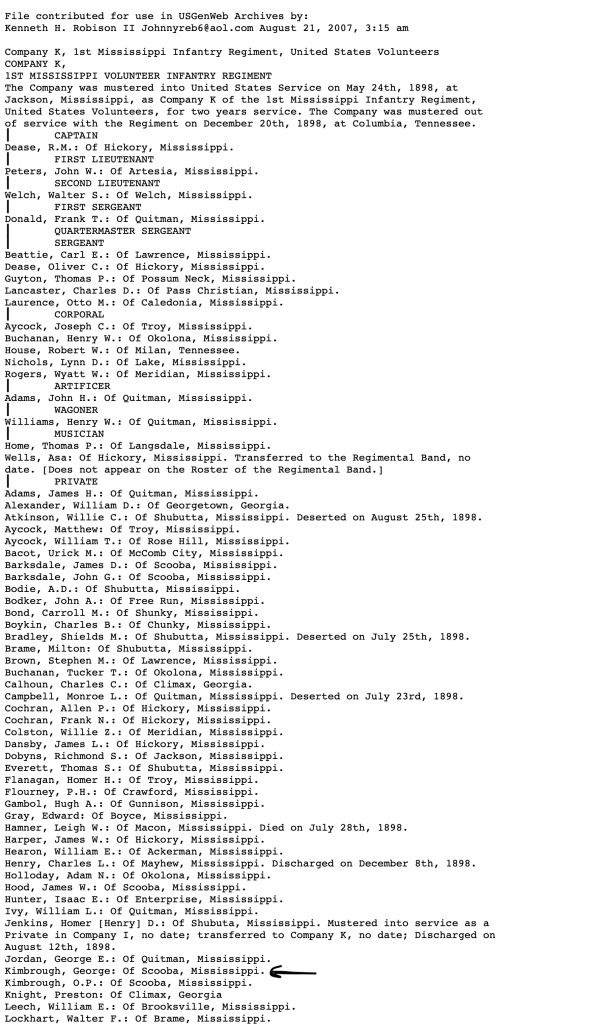
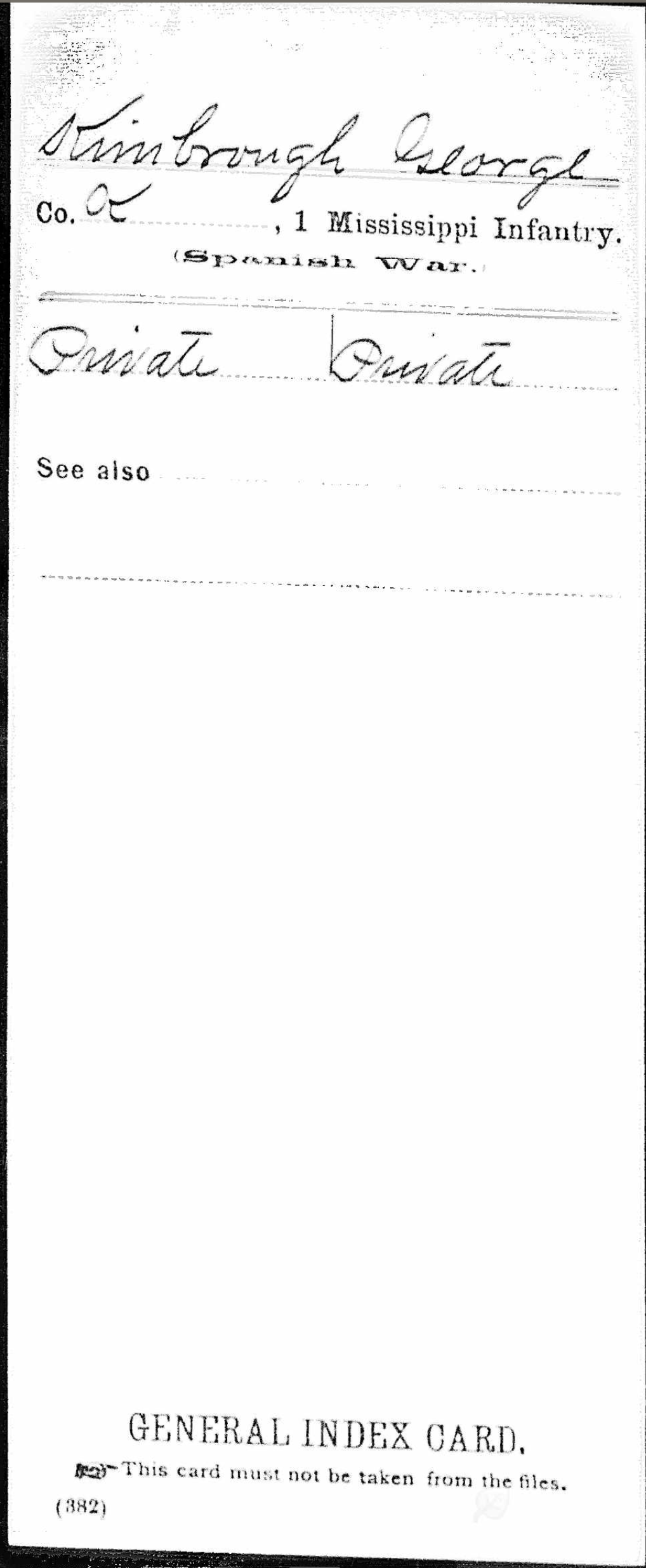
It was a little time later that I found a piece of paper in my grandfather’s (Howard K Lundeen’s) old briefcase. It was some information my grandparents had collected on a trip back south to visit family. They received a few brief histories from Camille’s family. On this history it described how George enlisted in the Spanish-American War. It discussed how he was so sick that his father John Wesley Kimbrough had to go get him from Camp Thomas in Chichamauga, Georgia. This was so exciting. I had found the war he had fought in. But what was the Spanish-American War and how did this affect Georges life? I had so many questions. I was thinking maybe this was the war with Mexico. It’s not one that we study to much in the history lessons in school. It was a war fought between Spain and the United States. They fought over Cuba, Puerto Rico, Philippines, and Guam. As I researched the Spanish American War and how the effects of Camp Thomas were so deplorable and the dire circumstances led to thousands of deaths, I could see and feel the anxiety that John Wesley would have had riding out to save his son. I could imagine the hardships that George faced as he tried to do his duty to his country and follow in his father’s footsteps from the Civil War. There were more lives lost at Camp Thomas, training grounds versus the whole Spanish-American War. It’s an interesting story to read and summarized in a nutshell on George’s page. This was one of my many gemstones found amongst the rubble of information. We can look at all these distant relatives and see and feel their experiences lifting us up in what we have to face and our trials in our daily lives.
My daughter taught me a great lesson. Just as she worked to look for something precious in an area she new something special existed, I too look and investigate these relatives and the stories behind the events to see something so much more than a date and an event. I can see strength, courage, determination. I can gain a glimmer of beauty in the story that enriches my life and the lives of my family. I have found so many more rubies in the rough searching out our family stories and seeing so much beauty in the details of their lives and all they’ve been through so we could be here today. It’s truly been a joy to search out my ancestors and share their stories with family and friends.
I found this information on the church blog. It truly relates to what I’ve been trying to say and how we can help our families grow from the stories and experiences of our ancestors.
Why We Need Family History Now More Than Ever
September 26, 2017 –
FamilySearch Blog
“Compassion
Learning the history of our ancestors helps us gain a greater understanding of the challenges they faced, and it often inspires greater love and compassion for their flaws and mistakes. This compassion can easily translate to our relationships with the living, within our families and outside them. We all face hard things. Remembering that fact in the context of others’ shortcomings allows us to be better employees, managers, spouses, parents, children, siblings, and human beings.
Resilience
Knowing our family history builds resilience. In learning about our ancestors’ lives, we can see patterns of overcoming failures and surviving hard times. Their stories remind us that surely not everything in life will work easily, that disappointments occur and inequalities exist, but that we can recover, triumph, and find happiness despite hardships.
Bruce Feiler, in an article for the New York Times, summarizes a study about the resilience of children: “The more children knew about their family’s history, the stronger their sense of control over their lives, the higher their self-esteem and the more successfully they believed their families functioned. [It] turned out to be the best single predictor of children’s emotional health and happiness.”
Selflessness
William Dade was an 18th-century cleric in Yorkshire, England. Although he never married and had no children of his own, he promoted the practice of including as much information as possible in parish registers. Because of his efforts, many registers of this period contain rich information for genealogists. Amy Harris, a family history professor at Brigham Young University, refers to this type of selfless effort as genealogical consciousness. The act of being aware of and having a sense of responsibility to our ancestors, progenitors, and all of future humankind is an act of altruistic selflessness.
The ability to cooperate and act selflessly is unique to humanity. Harris teaches that it is what allows us to harness the “power of millions and billions.” Learning our history, recording it, and preserving it blesses not only our related family, but the entire human family.
Self-Worth
As we dive into our own family histories, we see events unfold on both a large scale and a personal scale. Contemplating the enormity of mankind while reading about the hand of the Lord in our ancestors’ lives bears record to us of His concern and immense love for each of us personally. Our worth and value is great in His sight. We are loved and known by Him.
Our family history goes beyond the names and dates we find in our tree. It’s about what makes us who we are. It’s about people with whom we can form deep connections. It’s about people who lived and breathed and suffered and triumphed. It’s about roots and branches and leaves and entire forests. It’s about all of us.”
